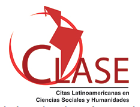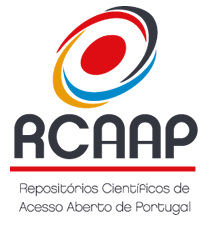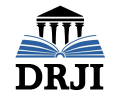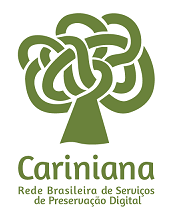The return of the prodigal son: an understanding of theory of Analytical Psychology
DOI:
https://doi.org/10.5433/1679-0383.2020v41n1p45Keywords:
Prodigal son, Rembrandt, Analytical Psychology, Paternal Complex.Abstract
This study aims to identify some basic concepts of Analytical Psychology in Rembrandt's painting entitled "The Return of the Prodigal Son", inspired by the parable "The Prodigal Son", taken from the Bible, Luke's Gospel, chapter XV, verses 1-32. The precepts of Analytical Psychology on individuation, conscious, unconscious personal, collective, anima, animus, self, persona, symbols, complexes, paternal complex, individuation process, archetypes and their correlation with religious artistic expression were considered. The methodology was a bibliographic review on the websites of the CAPES and Scielo portal of the last five years, articles, books of the Jungian approach. In summary, it has been reiterated that there is contribution of the arts in the process of Analytical Psychology, since both the Parable of the Prodigal Son and the painting of Rembrandt illustrate the symbolic codification in the process of individuation of man. In this way, it was understood that the human being is a set-in continuous transition, in process of incessant improvement in all aspects considered (philosophical, sociological, spiritual, ethical, moral). Thus, in this uninterrupted process of transformation, complexities arise in which some conflicts disappear and others remain in their anthropological, ancestral history as perspectives of apprehension, achievements that must be achieved.Downloads
Metrics
References
BARCELLOS, G. O irmão: psicologia do arquétipo fraterno. Petrópolis: Vozes, 2009.
BATISTA, R. S. Sobre Carl G. Jung. Revista Brasileira de Educação Médica, Rio de Janeiro, v. 38, n. 3, p. 409-412, 2014.
BÍBLIA. Bíblia sagrada. Disponível em: https://bibliaonline.com.br/acf/lc/15. Acesso em: 16 jul. 2018.
BULL, D. et al. Rembrandt-Caravaggio. Amsterdam: Rijksmuseum, 2006.
CAVALCANTE, R. O casamento do Sol com a Lua. São Paulo: Círculo do Livro, 1992.
CAVALCANTE, R. O mundo do pai: mitos, símbolos e arquétipos. São Paulo: Cultrix, 1995.
CHEVALIER, J.; GHEERBRANT, A. Dicionários de símbolos. Rio de Janeiro: José Olympio, 1996.
DRIESSEN, C. Rembrandts vrouwen. Amsterdam: Bert Bakker, 2012.
DUARTE, A. J. O. Ecologia da alma: a natureza na obra científica de Carl Gustav Jung. Junguiana, São Paulo, v. 35, n. 1, p. 5-19, 2017.
GEWEHR, R. B. Entre filosofia e ciência: o problema do naturalismo na psicologia de Carl G. Jung. Psicologia USP, São Paulo, v. 30, p. 1-12, 2019.
HOLLIS, J. Sob a sombra de Saturno a ferida e a cura dos homens. São Paulo: Paulus, 1997.
HUISMAN, D. Dicionário de filósofos. São Paulo: Martins Fontes, 2001.
JUNG, C. G. A natureza da psique. Petrópolis: Vozes, 2013. (Obra Completa de C. G. Jung, v. 8, pt. 2).
JUNG, C. G. Aion: estudo sobre o simbolismo do si-mesmo. Petrópolis: Vozes, 2011a. (Obra Completa de C. G. Jung, v. 9, pt 2).
JUNG, C. G. Civilização em transição. Petrópolis: Vozes, 2001. (Obra Completa de C. G. Jung, v. 10, pt. 3).
JUNG, C. G. Espiritualidade e transcendência. Petrópolis: Vozes, 2011b.
JUNG, C. G. Memórias, sonhos e reflexões. Rio de Janeiro: Nova Fronteira, 2006.
JUNG, C. G. O eu e o inconsciente. Petrópolis: Vozes, 2011c. (Obra Completa de C. G. Jung, v. 7, pt. 2).
JUNG, C. G. O homem e seus símbolos. Petrópolis: Vozes, 2008a.
JUNG, C. G. Os arquétipos e o inconsciente coletivo. Petrópolis: Vozes, 2003. (Obra Completa de C. G. Jung, v. 9, pt. 1).
JUNG, C. G. Psicologia do inconsciente. Petrópolis: Vozes, 1999. (Obra Completa de C. G. Jung,, v. 7, pt. 1).
JUNG, C. G. Psicologia e religião. Petrópolis: Vozes, 2007. (Obra Completa de C. G. Jung, v. 11, pt. 1).
JUNG, C. G. Símbolo da transformação. Petrópolis: Vozes, 2011d. (Obra Completa de C. G. Jung, v. 11, pt. 3).
JUNG, C. G. Tipos psicológicos. Petrópolis: Vozes, 2008b. (Obra Completa de C. G. Jung, v. 6).
JUNG, C. G. Estudos sobre psicologia analítica. Petrópolis: Vozes, 1981.
MINAYO, M. C. S. O desafio do conhecimento: pesquisa qualitativa em saúde. 12. ed. São Paulo: Hucitec-Abrasco, 2010.
MIRANDA, P. O numinoso e a experiência religiosa na psicologia de Carl Jung. Diálogos Junguianos, Brasília, v. 3, n. 1, p. 12-35, 2018. Disponível em: https://bit.ly/2WCpfwT. Acesso em: 9 jul. 2018.
OTTO, R. O sagrado: os aspectos irracionais na noção do divino e sua relação com o racional. São Paulo: Vozes, 2007.
PENNA, E. M. D. Processamento simbólico-arquetípico: pesquisa em psicologia analítica. São Paulo: EDUC: FAPESP, 2015.
PENNA, E. M. D. Um estudo sobre o método de investigação da psique na obra de C. G. Jung. 2003. Dissertação (Mestrado em Psicologia) - Pontifícia Universidade Católica de São Paulo, São Paulo, 2003.
PERES, L. M. V.; BARROS, R. M. K; ZANELLA, A. K. A imagem do arquétipo mestre-aprendiz que produziram marcas significativas: uma abordagem junguiana nas histórias de vida. Revista @mbienteeducação, São Paulo, v. 12, n. 2, p. 72-87, 2019.
REMBRANDT, H. van R. The return of the prodigal son. [1662?]. Oil on canvas, 262 x 206 cm. Disponível em: https://bit.ly/2z1hoQo. Acesso em: 16 jul. 2018.
SILVA JÚNIOR, R. C. O conceito junguiano de símbolo desde seus primórdios. 2009. Dissertação (Mestrado em Psicologia Clínica e Cultura) - Universidade de Brasília, Brasília, 2009.
SILVEIRA, N. Jung: vida e obra. Rio de Janeiro: Paz e Terra, 2003.
SLIVE, S. Dutch painting: 1600-1800. New Haven: Yale University Press, 1995.
STEIN, M. Jung: o mapa da alma. São Paulo: Cultrix, 2016.
SVETLANA, A. O projeto de Rembrandt. São Paulo: Companhia das Letras, 2010.
TOMMASI, S. B.; SOARES, L. F. M. O herói nos mitos gregos. Rio de Janeiro: Wak, 2015.
WHITMONT, E. C. A busca dos símbolos: conceitos básicos de Psicologia Analítica. São Paulo: Cultrix, 1995.
XAVIER, M. O conceito de religiosidade em Carl G. Jung. Revista Psico, Porto Alegre, v. 37, n. 2, p. 183-187, 2016.
Downloads
Published
How to Cite
Issue
Section
License
Semina: Ciências Sociais e Humanas adopts the CC-BY-NC license for its publications, the copyright being held by the author, in cases of republication we recommend that authors indicate first publication in this journal.
This license allows you to copy and redistribute the material in any medium or format, remix, transform and develop the material, as long as it is not for commercial purposes. And due credit must be given to the creator.
The opinions expressed by the authors of the articles are their sole responsibility.
The magazine reserves the right to make normative, orthographic and grammatical changes to the originals in order to maintain the cultured standard of the language and the credibility of the vehicle. However, it will respect the writing style of the authors. Changes, corrections or suggestions of a conceptual nature will be sent to the authors when necessary.



















